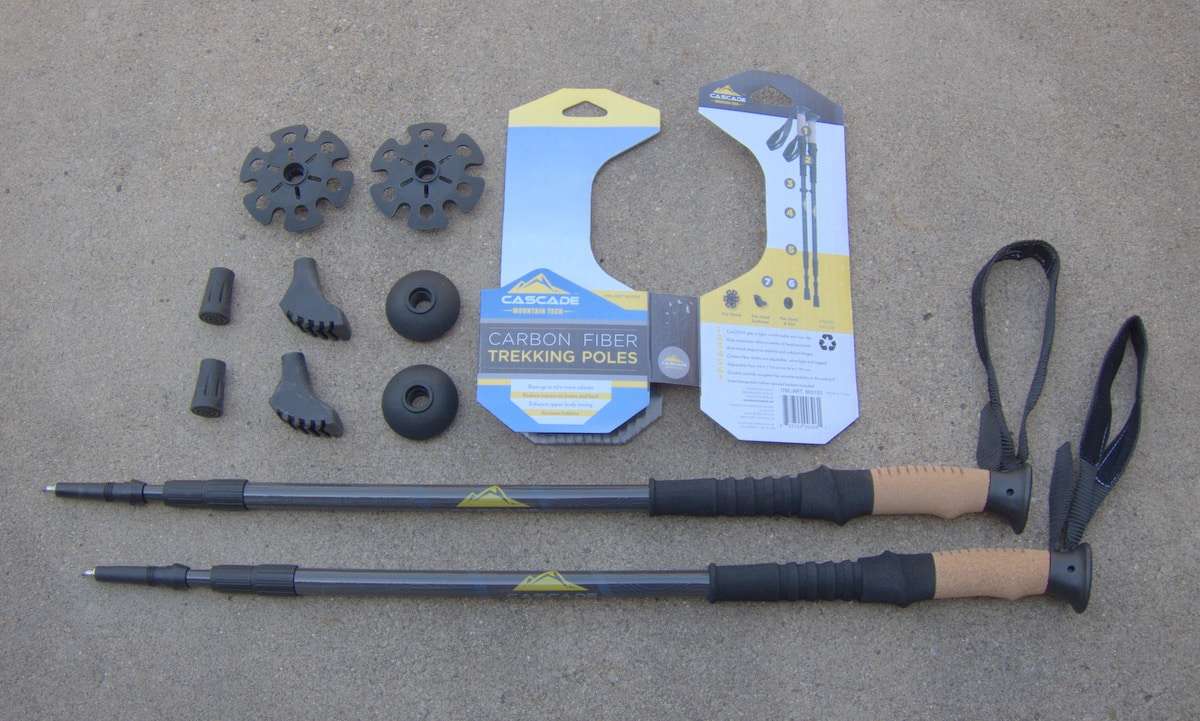Embarking on a hiking adventure often necessitates the right gear, and among the most valuable tools a hiker can employ are hiking poles. Choosing the right poles can significantly reduce strain on your knees, improve balance on uneven terrain, and even provide an upper-body workout. When considering where to purchase these essential tools, many outdoor enthusiasts find themselves drawn to the vast selection and competitive pricing offered at retailers like Costco. This guide will delve into the world of hiking poles, particularly those you might find at Costco, helping you make an informed decision for your next trek.
Understanding the Different Types of Hiking Poles
Hiking poles aren’t a one-size-fits-all item. They come in various materials, styles, and configurations, each catering to different needs and preferences. Here’s a breakdown of some key considerations:
Material: Aluminum vs. Carbon Fiber
- Aluminum: Generally more durable and budget-friendly, aluminum poles are a solid choice for beginners and those who prioritize longevity. They can withstand significant impacts and are less prone to shattering.
- Carbon Fiber: Lighter and more vibration-dampening than aluminum, carbon fiber poles are preferred by experienced hikers seeking to minimize weight and fatigue. However, they are typically more expensive and can be more susceptible to breakage under extreme stress.
Grip Material: Cork vs. Foam
- Cork: Known for its moisture-wicking properties and ability to mold to the shape of your hand over time, cork grips offer excellent comfort and a secure hold.
- Foam: A lighter and often more affordable option, foam grips provide decent cushioning and insulation. However, they may not be as durable or as effective at managing moisture as cork.
Locking Mechanisms: Twist-Lock vs. Flick-Lock
- Twist-Lock: These mechanisms adjust pole length by twisting sections relative to each other. They can sometimes loosen over time and may require periodic tightening.
- Flick-Lock: Utilizing external levers to secure the pole sections, flick-lock mechanisms are generally considered more reliable and easier to adjust, even with gloves on.
What to Expect from Hiking Poles at Costco
Costco often carries a rotating selection of hiking poles, typically offering good value for the price. While the specific brands and models may vary, you can generally expect to find:
- Aluminum poles: These are a common offering, providing a durable and affordable option for recreational hikers.
- Adjustable length poles: Essential for adapting to varying terrain and user heights.
- Comfortable grips: Often featuring ergonomic designs and moisture-wicking materials.
- Accessories: Many Costco offerings include accessories like trekking baskets (for snow or mud) and rubber tip protectors (for pavement).
Choosing the Right Hiking Poles for You
Selecting the perfect set of hiking poles involves careful consideration of your individual needs and hiking style. Consider the following factors:
- Your experience level: Beginners may benefit from the durability and affordability of aluminum poles, while experienced hikers might prefer the lightweight performance of carbon fiber.
- The type of terrain you’ll be hiking: Harsher terrains might call for more durable poles.
- Your budget: Costco often provides excellent value, but it’s crucial to weigh the features and quality against your budget.
The weight of the pole also plays a vital role, as lighter poles require less energy to swing during long hikes. Think about the types of hikes you plan to do, and if you are planning on a significant amount of uphill climbs, lighter poles will be more beneficial, even if they come at a slightly higher price.
Making the Most of Your Costco Purchase
Costco’s return policy is famously generous, providing peace of mind when making a purchase. If you’re not satisfied with your hiking poles, you can typically return them for a full refund. Before hitting the trail, be sure to adjust the poles to the correct height and practice using them on different types of terrain. Proper technique is key to maximizing the benefits of hiking poles and preventing injuries. Finally, remember to maintain your poles by cleaning them regularly and inspecting them for any signs of wear or damage.
But what if you’re taller or shorter than average? Should you still rely on the standard sizing charts, or seek out poles designed for specific height ranges? And beyond the poles themselves, are you considering the necessary accessories? Do you need specialized baskets for snowshoeing, or perhaps upgraded tips for enhanced grip on rocky surfaces? Furthermore, have you thought about storage and transport? Are you planning on backpacking and require collapsible poles that pack down small, or are you primarily day hiking and can manage poles that are less compact?
Beyond the Basics: Advanced Considerations for Hiking Poles
Are you simply looking for basic support, or are you hoping to use your poles for a more vigorous workout? Do you know that some poles come equipped with features like built-in shock absorption to further reduce joint impact? And have you considered the implications of different grip angles and designs for wrist comfort during extended use? Are you aware that proper pole planting technique can dramatically improve your efficiency and reduce fatigue? Should you explore online resources or even consider a lesson to refine your skills?
Maintenance Matters: Protecting Your Investment
Wouldn’t you want to know how to properly care for your hiking poles to extend their lifespan? Are you regularly cleaning the locking mechanisms to prevent corrosion and ensure smooth operation? And are you storing your poles in a dry environment to prevent damage to the grips and shafts? Have you considered carrying spare tips or baskets in your repair kit, just in case of unexpected breakage on the trail? And what about the environmental impact of your choices? Should you opt for poles made from sustainable materials or from companies committed to responsible manufacturing practices?
So, armed with this knowledge, are you ready to confidently choose the perfect set of hiking poles and embark on your next adventure? Will you leverage Costco’s potential value to find the ideal balance of price and performance? And most importantly, are you prepared to embrace the benefits of using poles to enhance your safety, comfort, and overall enjoyment of the great outdoors?
But what if you are a seasoned hiker tackling challenging terrain? Are you considering the load-bearing capacity of the hiking poles? Would stronger, more robust poles provide the stability and support you need for steep ascents and descents? And have you thought about the impact of your pole choice on your balance and coordination? Could the right poles actually improve your agility and prevent falls, especially on uneven or slippery surfaces?
Specialized Poles: Are They Right for You?
Are you a trail runner seeking ultralight poles that won’t weigh you down? Or are you a winter hiker needing specialized poles with large snow baskets for deep powder? Have you explored the world of folding poles, ideal for stashing in your pack when not in use? And what about poles with integrated features like built-in cameras or trekking seats? Are these niche options worth considering for your specific needs and interests?
Adjustability: Finding Your Perfect Fit
Are you aware that the ideal pole length varies depending on the terrain and your individual biomechanics? Are you adjusting your pole length frequently during your hikes to optimize performance on uphill, downhill, and flat sections? And have you experimented with different grip positions to find the most comfortable and efficient hand placement? Are you maximizing the adjustability features of your poles to fine-tune your fit and technique?
Beyond the Purchase: Getting the Most Out of Your Poles
Are you practicing proper pole planting technique to maximize propulsion and minimize strain on your joints? Are you using your poles to maintain a consistent rhythm and cadence, improving your overall efficiency? And are you aware of the potential benefits of using poles for balance, stability, and injury prevention? Are you fully utilizing the versatility of your hiking poles to enhance your hiking experience?
And when you’re done with your hike, are you properly cleaning and storing your hiking poles to prolong their lifespan? Are you inspecting them regularly for signs of wear and tear, addressing any issues before they become major problems? And are you sharing your knowledge and experiences with other hikers, helping them discover the benefits of using poles? Could you even consider joining a hiking group or online forum to learn from others and share your own insights?


